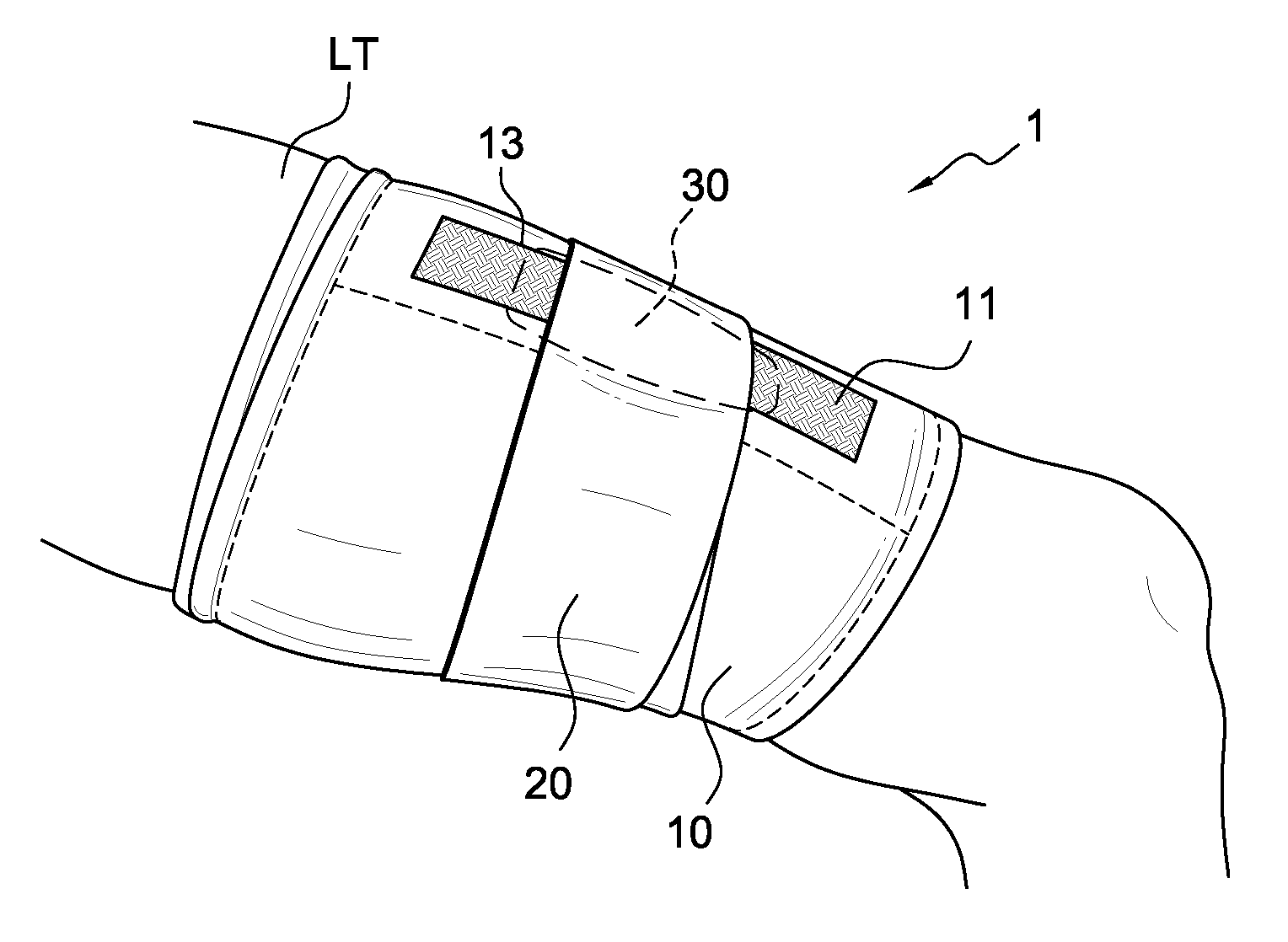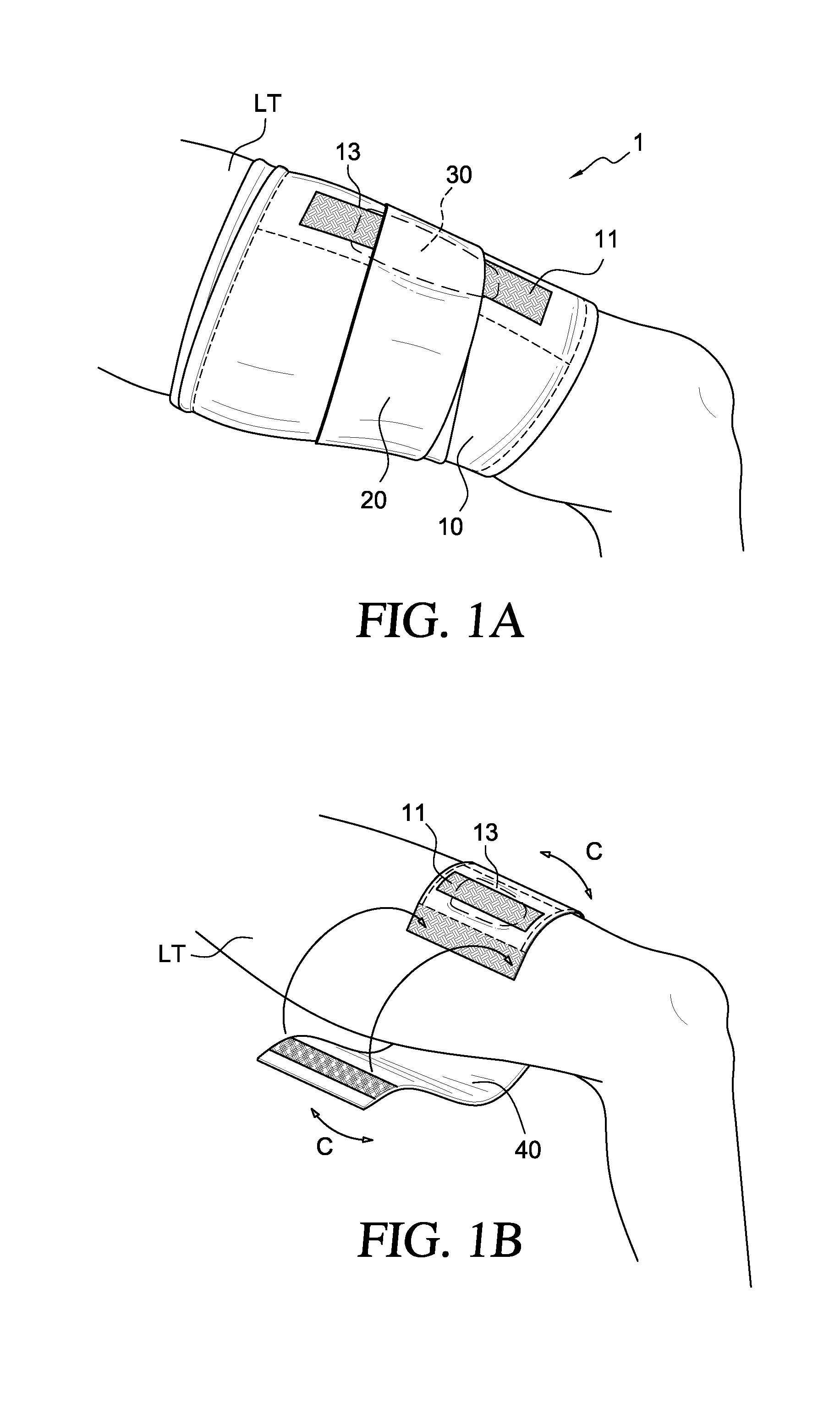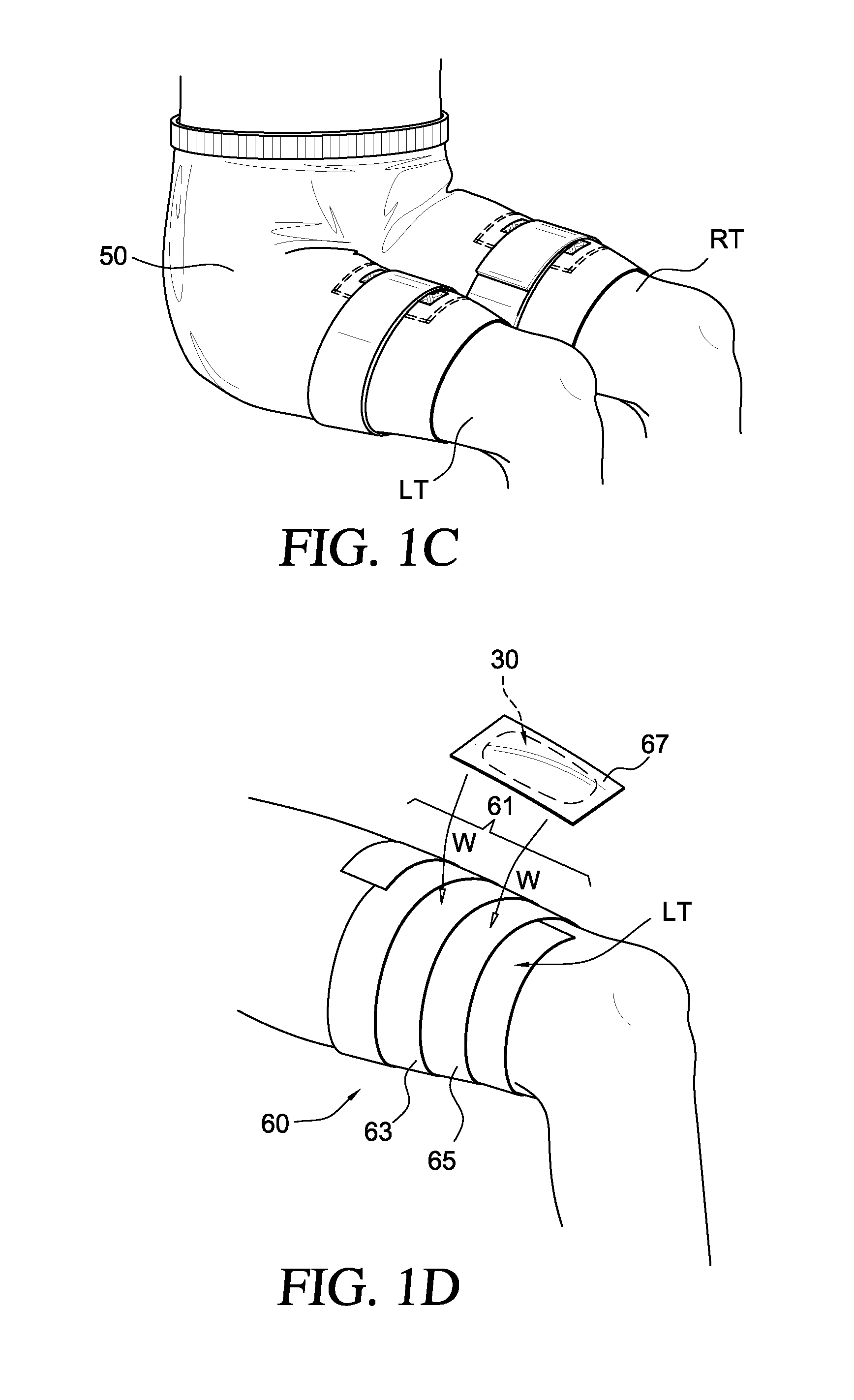Apparatus for, and method of, reducing knee pain and/or increasing levels of athletic performance
a knee and knee technology, applied in the field of leg apparatus, can solve the problems of addictiveness, side effects, high cost of pain medications, etc., and achieve the effect of reducing or eliminating knee pain in an easy and/or effective way
- Summary
- Abstract
- Description
- Claims
- Application Information
AI Technical Summary
Benefits of technology
Problems solved by technology
Method used
Image
Examples
examples
[0121]The idea of treating such a wide variety of knee pain with a single device is as stated by one orthopedic surgeon who wore the device for his knee pain, “defies all his medical training[.]” The ability to relieve pain as dramatically and instantly as this embodiment of the present invention combining high compression to the thigh is unpredictable. The use of strap 20 and / or actuator 30 positioned over the quad at the muscular juncture described above, in combination with such compression is also not predictable.
[0122]Using a thigh sleeve alone, has until now, been useful only for hamstring and quadriceps muscular injuries. The use of a device on a thigh to reduce articular joint pain, degenerative joint pain, and other types of knee pain—all of which are all non-muscular joint pain—is until now non-existent. The surprising nature of this discovery is all-the-more heightened when considering the additional use of strap 20 and / or actuator 30.
[0123]First, the entire idea of apply...
examples 1-5
[0128]Apparatus 1 was evaluated on patients who do not experience knee pain. Muscle activity associated with application of apparatus 1 was quantified using established electromyographic (EMG) techniques. Five subjects were instrumented for EMG testing. Biopolar surface electrodes were placed over the muscle belly of the following muscles on the subject's dominant leg: 1) vastus lateralis, 2) vastus medialis, 3) lateral hamstrings, 4) medial hamstrings, and 5) gluteus maximus. EMG signals were sampled at 1560 Hz while subjects performed the following activities: 1) walking at a self selected speed, 2) step down from a 15.24 cm step, and 3) drop jump from a 35.56 cm box. In addition, subjects performed maximal voluntary isometric contractions for the knee flexors
VLStepDrop Jump:Drop Jump:Gait: 1st 20%(% MVIC)DownDecel.Accel.StanceNo App.23.4 ± 7.554.0 ± 21.382.4 ± 28.814.1 ± 10.9Apparatus19.2 ± 5.543.2 ± 17.672.4 ± 25.58.2 ± 5.1% Change−17.9%−20.0%−12.1%−22.7%
and extensors on a KinCo...
examples 6-42
[0138]It is believed that there are several muscular and neural effects occurring on a knee while wearing apparatus 1. Apparatus 1 is believed to provide an improvement in muscular function that leads to the sensation of more stability. Several wearers who had been wearing a rigid brace felt an immediate relative improvement in perceived knee stability. The most profound effect, however, was in the reduction of knee pain.
[0139]Thirty-seven participants were tested for reduced knee pain when using apparatus 1. There were three categories of test subjects, (1) osteo-arthritis (Examples 6-13), (2) patellafemoral pain (Examples 14-28), and (3) general knee pain (Examples 29-42). As seen below, the average percentages of pain reduction were at least about 83%, at least about 79%, and at least about 75%, respectively. The test was a standard stair step test used in diagnosing knee pain and symptoms. Each patient stepped down from a 17.78 cm stair, using the affected knee's leg, touched th...
PUM
 Login to View More
Login to View More Abstract
Description
Claims
Application Information
 Login to View More
Login to View More - R&D
- Intellectual Property
- Life Sciences
- Materials
- Tech Scout
- Unparalleled Data Quality
- Higher Quality Content
- 60% Fewer Hallucinations
Browse by: Latest US Patents, China's latest patents, Technical Efficacy Thesaurus, Application Domain, Technology Topic, Popular Technical Reports.
© 2025 PatSnap. All rights reserved.Legal|Privacy policy|Modern Slavery Act Transparency Statement|Sitemap|About US| Contact US: help@patsnap.com



